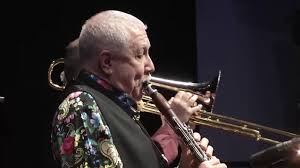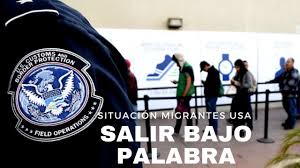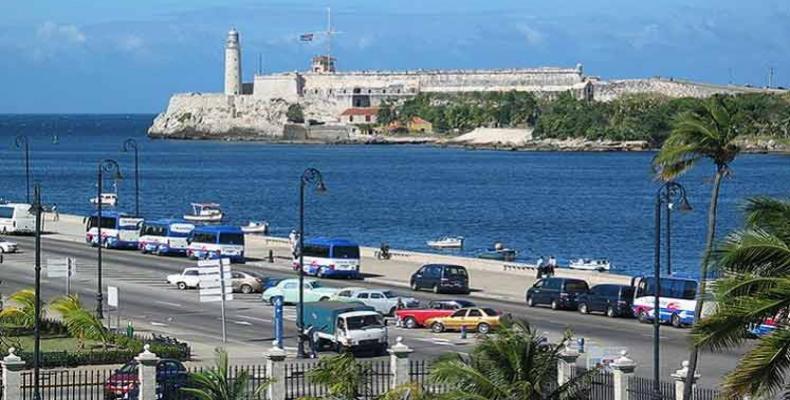 CUBAN CHARACTERS: ANGEL DE LA TORRE, THE CUBAN TARZAN. PHOTOS.
CUBAN CHARACTERS: ANGEL DE LA TORRE, THE CUBAN TARZAN. PHOTOS.
The Tarzan we all know, Edgar Rice Burroughs’s imaginary character, was hairless or we don’t know what he shaved with, communicated with animals, and was an invincible vigilante; On the other hand, the few or only photos that have been obtained of the Cuban Tarzan show him as a bearded man, in the style of current fashion, where he does not peel, nor shave and I think that neither bathing nor was it in any way neither vigilante nor spoke to monkeys.
Back in the 1940s, when the Tarzan films were at their peak, a particularly eccentric character named Ángel de la Torre reached great celebrity in Cuba who wandered into the Havana forest to live in the open air and in a completely natural way.
https://youtu.be/7Cwh_PBB5OU
Press ^ Here
Edgar R. Burroughs’Tarzan.
In his eagerness to gain fame apart from going to live there, he made a spectacular dive from the bridge of the Almendares river that crosses 23rd street in Vedado, but of course, he previously sought that his feat had enough witnesses, including many journalists. If his objective had been someone else, he would have gone to live in the Sierra de Los Órganos in Pinar del Río, the Sierra Maestra or the Ciénaga de Zapata. Instead, he chose a place that was then fairly central and heavily visited.
Another madness he did was that one night, he outwitted the authorities, took a canoe and after paddling down the river, he headed for Havana along the coastline to finally disembark in front of the castle of La Punta, scantily clad in a loincloth. The police pursued him, but in the best Tarzanesque style, he evaded them and they could not reach him, running at full throttle along the Malecón and almost completely naked he went to take refuge in the premises of a radio station that existed on the Paseo del Prado.
When he saw the calmer thing again he outwitted the police, he got on his boat, and returned to his refuge in the forest of Havana. After this pirate incursion in the town of San Cristóbal, the press began to ponder his exploits and the legend of the Cuban Tarzan grew, but the authorities, busy with more important things, we must remember that we are in the 40s, where gangsterism predominated in Cuba did not pay much attention to what they considered was a harmless madman who only sought to attract attention. Something similar happened in our days with President Trump and look at the problems that this electoral laziness has brought to all humanity. But unlike the magnate, the Cuban Tarzan was a noble person.
THE GREATEST ACHIEVEMENT OF THE CUBAN TARZAN
This contempt or underestimation encouraged him to carry out more famous challenges, and he decided to do what no one had dared to do before paddle alone in a canoe from the mouth of the Almendares River to Varadero.
His announcement made at full blast made the sailors and pilots of the north coast smile who predicted that in the trunk in which he was traveling he would not be able to overcome the breakers of Jaruco or the tip of Seboruco in Matanzas with its imposing terraces and much less, he would be able to cross the imposing mouth of the deep bay of Matanzas. The most pessimistic predicted, even, that physical fatigue would yield him and that the current would drag him or hit his bones against the dog’s tooth or, worse still, he would disappear out to sea due to the action of currents, the same as many years later they would take advantage of tens of thousands of rafters in search of a future to reach Miami, and they believed that this would be their end and would never be heard from again.
But in July 1946, in the midst of great expectation and encouraged by the fans he already had, Ángel de la Torre went to sea and, against all bad omens and omens, he managed to reach Varadero where he was received with enthusiasm. His arrival at the spa coincided with the national regattas for rowing, which he witnessed as a guest of honor; receiving, in addition, from the participating athletes the most closed ovation in recognition of his feat.
Shortly after, the Commodore of the Habana Yacht Club, Rafael Posso, would present him with a gold medal on behalf of the Cuban Nautical Federation for having been … laugh without pain … the first Cuban in history to row 90 miles. There are many thousands who achieved it and many others who perished in the adventure, and they gave none of them a medal, although this time the motive was not to become famous but to be free.
But undoubtedly Angel de la Torre, the Cuban Tarzan, was an interesting character of which we do not know the end of him. Without a doubt, the ape-man of the books and comics-inspired many people to live a healthier life far from civilization and to get closer to animals, much nobler than man, no matter how wild they are.
 PERSONAJES CUBANOS: ANGEL DE LA TORRE, EL TARZAN CUBANO. PHOTOS.
PERSONAJES CUBANOS: ANGEL DE LA TORRE, EL TARZAN CUBANO. PHOTOS.
El Tarzán que todos conocemos, personaje imaginario de Edgar Rice Burroughs, era lampiño o no sabemos con qué se afeitaba, se comunicaba con los animales y era un justiciero invencible; en cambio, las pocas o únicas fotos que se han podido obtener del Tarzán cubano lo muestran como un barbudo, a la usanza de la moda actual, donde predomina el no pelarse, ni afeitarse y creo que ni bañarse tampoco y no fue en ningún modo ni justiciero ni hablaba con los monos.
Allá por la década de 1940, cuando estaban en su apogeo las películas de Tarzán, alcanzó gran celebridad en Cuba un personaje particularmente excéntrico llamado Ángel de la Torre que se internó en el bosque de La Habana para vivir al aire libre y de forma completamente natural.
En su afán de ganar fama aparte de irse a vivir allí, hizo un clavado espectacular desde el puente del río Almendares que cruza la calle 23 en el Vedado, pero por supuesto buscó previamente que su hazaña tuviera bastantes testigos, entre ellos muchos periodistas. Si su objetivo hubiera sido otro se hubiera ido a vivir a la Sierra de los Órganos en Pinar del Río, a la Sierra Maestra o a la Ciénaga de Zapata. En cambio escogió un lugar que era entonces bastante céntrico y muy visitado.
Otra locura que hizo, fue que una noche, burló a las autoridades, tomó una canoa y tras remar río abajo se dirigió a La Habana bordeando el litoral para, finalmente, desembarcar frente al castillo de La Punta escasamente vestido con un taparrabos. La policía lo persiguió, pero al mejor estilo tarzanesco, los evadió y no pudieron alcanzarlo,corriendo a todo dar el Malecón y casi completamente desnudo fue a refugiarse en el local de una radioemisora que existía en el Paseo del Prado.
Cuando vio la cosa más tranquila de nuevo burló a la policía, se embarcó en su bote y volvió a su refugio del bosque de La Habana. Tras esta incursión piratesca en la villa de San Cristóbal la prensa comenzó a ponderar sus hazañas y creció la leyenda del Tarzán cubano, pero las autoridades, ocupadas en cosas más importantes, hay que recordar que estamos en los años 40, donde el gansterismo predominaba en Cuba, tampoco le hicieron mucho caso al que consideraban era un loco inofensivo que sólo buscaba llamar la atención. Algo parecido pasó en nuestros días con el presidente Trump y miren los problemas que esta desidia electoral ha traído para toda la humanidad. Pero a diferencia del magnate, el Tarzán cubano era una persona noble.
LA MAYOR HAZAÑA DEL TARZAN CUBANO
Este desprecio o subestimación, lo estimuló a realizar retos más sonados, y decidió realizar lo que nadie se había atrevido a hacer antes: remar solo en una canoa desde la desembocadura del río Almendares hasta Varadero.
Su anuncio hecho a todo trapo hizo sonreír a los marineros y prácticos del litoral norte que pronosticaron que en el tronco en que viajaba no lograría vencer los rompientes de Jaruco ni la punta de Seboruco en Matanzas con sus imponentes terrazas y mucho menos, lograría traspasar la imponente boca de la profunda bahía de Matanzas. Los más pesimistas pronosticaron, incluso, que el cansancio físico lo rendiría y que la corriente lo arrastraría o iría a dar con sus huesos contra el diente de perro o, peor aún, desaparecería mar afuera por la acción de las corrientes, la misma que muchos años después aprovecharían decenas de miles de balseros en busca de un futuro para llegar a Miami, y creían que ese sería su fin y nunca más se sabría de él.
Pero en julio de 1946 en medio de una gran expectación y alentado por los admiradores con que ya contaba se hizo a la mar Ángel de la Torre y, contra todos los males augurios y presagios logró llegar hasta Varadero donde fue recibido con entusiasmo. Su llegada al balneario coincidió con las regatas nacionales para remos, las que presenció como invitado de honor; recibiendo, además, de los deportistas participantes las más cerrada ovación en reconocimiento a su hazaña.
Poco después el comodoro del Habana Yacht Club, Rafael Posso le haría entrega de una medalla de oro en nombre de la Federación Náutica de Cuba por haber sido… ríanse sin pena… el primer cubano de la historia en remar 90 millas. Son muchísimos miles los que lo lograron y muchos otros que perecieron en la aventura, y a ninguno le dieron una medalla., aunque en esta ocasión el móvil no era hacerse famoso, sino ser libres.
Pero sin duda Angel de la Torre, el Tarzan Cubano, fue un personaje interesante del cual no sabemos su fin. Sin duda el hombre-mono de los libros y los cómics, inspiró a mucha gente a vivir una vida más sana lejos de la civilización y acercarse a los animales, mucho más nobles que el hombre por muy salvajes que sean.
Agencies/ Memorias Cubanas/ Carlos RodriguezB./ Extractos/ Excerpts/ Internet Photos/ YouTube/ Arnoldo Varona/ www.TheCubanHistory.com
THE CUBAN HISTORY, HOLLYWOOD.





























